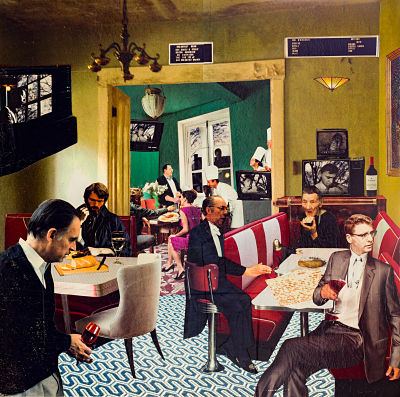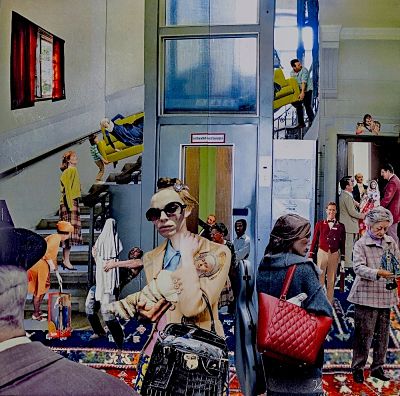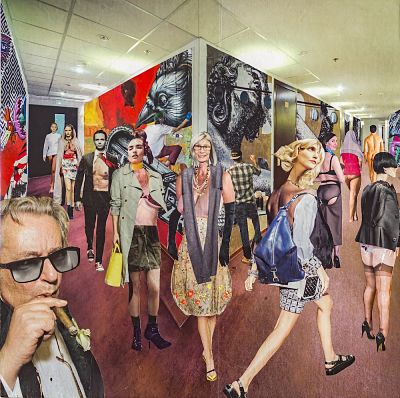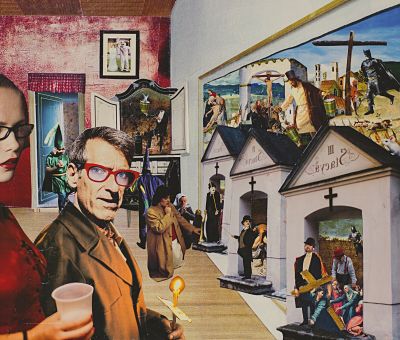
Maddin’s Diner
July 2016. Guy Maddin is a Canadian filmmaker whose father dies in 1977. The father takes a very long time to die, possibly kept alive by Maddin himself who engages in certain behaviours designed for that very purpose. The time finally comes. Five years later Maddin begins the process of grieving through his dreams, one of the recurring themes, his father’s return to life. He then makes a film, the intention being to recreate the dreams. While he fails here he does succeed in making his film, appropriately called ‘The Dead Father’.
The film father returns to his family after he’s died and resumes ‘living’ with them, but more often, the family down the street which he seems to prefer. His preference for this other family annoys the son who, one dark and stormy night, decides to reclaim his father once and for all. He grabs a flashlight and heads for the trees and shrubs nearby where the dead customarily take their nightly rest. The son moves among them and eventually spots his father. Crouching beside him, he inserts a spoon into his father’s belly and begins eating, stopping only when his father stirs and glares at him. Slowly, spoon still in his mouth, he shrinks away.
The practice of eating the dead is not entirely novel, but certainly distasteful, the more spiritual and metaphorical version easier. This is my body. This is my blood.
The guy whose body Christians eat understood the use of metaphor. He was even designated as the word made flesh. If Nietzsche is right and all words are metaphors, he embodied what I think Maddin wants to achieve on screen. In an interview for Border Crossings Maddin says, I want to do on the screen what words can do on the page with metaphors, produce that narcotic tingle poets talk about.
I intend to begin the collage with a dream image of people eating at a dinner theatre. There is a small twist in that the diners are not the viewers; rather, they are the viewed. I’m restless though, more intrigued with Maddin’s dead father film. The image of the son eating his father is just such a startling image.
The Catholic church teaches that the bread and wine used in the Eucharist undergoes a transformation into the actual body and blood of Christ. Obviously this transformation is of huge significance if it’s going to override the disgust factor. Okay…so here it is: you eat the body and drink the blood and you get eternal life.
In other circles it’s a part of the grieving process, a way to guide the souls of the dead into the bodies of their relatives. My question: does the film son really want to reclaim his father to this extent? Does he know what he’s getting himself into?
I finish the collage. There’s no dinner theatre exactly; just a few videos playing by way of substitution. And as far as I know, the diners are simply eating. Real food. Lots of bread. Wine. And Jesus just happens to be there that night.




